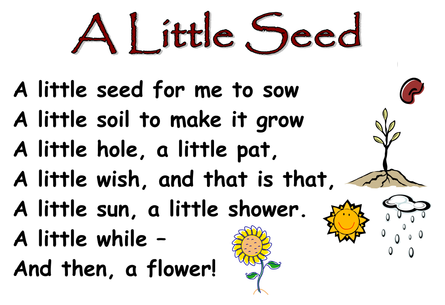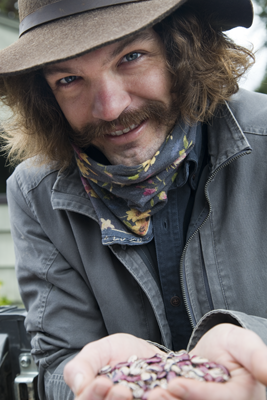Zachary Fulton
Seed Saver Superstar
by Erin Hill
When I write pieces for the Friends of the Farms newsletter, something I’ve been doing for almost three years now, it usually starts with an interview. The subject and I talk (really they talk, I listen), and sometimes we tour their garden or farm or yard. Tami Meader, a current Board member, takes beautiful photos and in the end it’s easy for me to craft a small window into the person’s life.
This piece, on Bainbridge Island Farmer Zachary Fulton, stands out from all the others. To start, I didn’t interview him. Heather Burger (FOTF Executive Director) did, along with Tami. From their notes I’m attempting to create an idea in your minds about a member of our community that I’ve never even met! That would be hard enough, but after reading their notes I am absolutely kicking myself for missing the opportunity to sit down with Zac and hear his stories firsthand.
Meet Zac
Zachary Fulton was born in El Paso, Texas. A move to Athens, Ohio at age 16 dumped a Texan teenager amidst back-to-the-earth hippies, and his growing awareness of farms, farmer’s markets and the local food economy lit a fire that continued to grow. Ten years later, at age 26, Zac was ready to be a farmer but hardly knew where to start.
A desire for adventure took him to Mancos, Colorado. where he interned at a local farm for $100 a week, living in a horse barn they called the "Zac Shack." Internship over, and still deciding his next career move, Zac set out on an 800-mile bicycle ride. His meanderings took him all the way to the headwaters of the Rio Grande and down to San Diego. Switching from bike to car, he headed east again, landing in Albuquerque. All these travels did add up to a big adventure but didn’t exactly pay the bills. At one point on the ride he ran out of food and water, and a friend gave him a beer and a pound of ground beef to get him through the night. But no water.
So how does a Texan in New Mexico end up farming on a small island in Washington?
Looking to dig even deeper into farming as a profession, Zachary searched for available internships on the ATTRA website (a great resource for anyone interested in pursuing sustainable agriculture). He came across Brian MacWhorter and Butler Green Farms and applied. Brian response was swift: "Come now!"
It’s not often said about farming, so when it is it’s worth printing in bold: for Zachary, interning at Butler Green Farms was “mind-blowing”. He had never before seen vegetable farming turn a profit and had never before seen a farmer lease farmland rather than owning it himself. Witnessing and being a part of what Brian MacWhorter has created opened his eyes to a different way of farming… sustainable for both the farm and the farmer.
All good things must come to an end, however, and after his first season at Butler Green Zachary set off on another bike ride, this time from Berkeley to Yosemite to Death Valley, Joshua Tree and on to San Diego. Only the young are able to sustain themselves on peanut butter, anchovies, and 12 cans of beer, but even Zachary was feeling the call for vegetables. Stumbling across a stand selling cucumbers, Zac bought a dozen and ate them straight, reveling in their crisp cool snap. His traipsing wound further south, into Baja California, before the siren song of another season of work on Bainbridge Island called and he turned his wheels back north.
The next three seasons found Zachary working full time at Butler Green as Irrigation Manager. It seems, this time, that life in the Pacific Northwest has stuck; Zachary now lives and farms on the north end of Bainbridge Island. Asked what his current favorite plant is, Zac told us “The Purple Hopi String Bean” that he grows from seeds gifted to him by Lee Ann at Laughing Wolf Farm. Growing seeds is more than just ensuring you have food; it’s culture and history, which resonates with Zachary. Last season he planted an 80’ x 200’ space with beans, garlic, flax, dill, onions and Root Beer Popcorn, all heirloom strains for the purpose of seed saving -- his passion.
Zachary is the first to admit that what he’s seeking is a “radically different lifestyle”, one that is built upon an understanding that we are on stolen ground. This is land that the Suquamish and other tribes farmed but did not own, and now other people own it. He's trying to wake up, listen, learn, and participate in a way that is not based on maximizing financial gain but by building community and feeding all people. His worldview is influenced by the people he’s met as he’s journeyed, and he envisions a world where food is not used to exploit land and people. Where people care for one another and no one slips through the cracks.
“I’m hopeful when I see the succession farming that's taking place, as Akio mentored farmers Karen Selvar, Betsey Wittick, Brian MacWhorter and others, they too are mentoring the next generation.” He admires local farmers like John Chang, who for years has donated to Helpline House 100% of the food he grows on half an acre of land owned by the City of Bainbridge Island and managed by Friends of the Farms.
He is inspired by the work being done at the Seattle BIPOC Organic Farm and Food Bank whose mission is for every single person to have clean water and organic food. They partner with farms and co-ops, and help promote and mobilize small farms, most of which are currently struggling.
He is committed to learning from places like Soul Fire Farm, an Afro-Indigenous centered community farm committed to uprooting racism and seeding sovereignty in the food system, training the next generation of activist-farmers and strengthening the movements for food sovereignty and community self-determination.
And he finds hope in an awareness that farming is part of an ecosystem as seen through the regenerative farming mindset espoused by Jean-Martin Fortier, a Québécois farmer, author, educator and advocate for ecological, human-scale and economically viable sustainable agriculture.
A rolling stone gathers no moss, and I wouldn’t hold my breath expecting such a traveling soul to stay on our small island forever. But, for now, for this moment, Zachary is here sharing his heart and his passions with us. We’re lucky to have him, and I for one, can’t wait to meet him.
-Erin Hill
On Seed Saving
I am always looking for low hanging fruit. I tell myself it’s not laziness, but efficiency to start with what is within easy reach and then move on to the harder stuff.
There is plenty to tackle. Take your pick:- The Anthropocene, where Humans have such an enormous impact on the planet that there is a mass extinction of other creatures.
- Climate Change. Turns out burning fossil fuels, diverting rivers, mining for rare earth metals… might not be great for the planet.
- Polar Bears. We should all be panicking about Polar Bears.
- Patented seeds. Did you know that lots of companies have patented their own seed? That means it’s impossible for the farmer (or backyard gardener) to save or share seeds. Do you ever even own something if you can’t save or share it?
- The trouble with patented seeds: The Sobering Details Behind the Latest Seed Monopoly Chart
As fewer and fewer varieties take over market share, the same tomato available everywhere, all the time, genetic diversity is lost. All of our current foods evolved (many at our own hand) from their wild relatives. We rely not only on those heirloom plants, but their still-wild cousins to ensure there is a robust, diverse genetic pool.

This winter, when you’re dreaming about long summer days, watering barefoot or pulling weeds with one hand and a cup of coffee in the other, you can join other Americans across the country who grow heirloom seed, and take your place preserving the past and ensuring the future.
If you want to learn more you can check out the
Open Source Seed Initiative,
or
Seed Savers Exchange.
Happy Growing,
Erin









